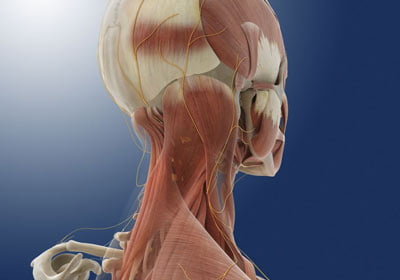When migraine headaches put you out of commission, you may be an ideal candidate for an occipital nerve block for a migraine. An occipital nerve block relieves the pain from most chronic headaches, including those from tension and stress. Relying on the most advanced diagnostic equipment and fast, accurate lab tests, the pain doctors at pain management NY work tirelessly to provide you with a multidisciplinary approach to interventional pain management. Call today for an appointment.
The greater and lesser occipital nerves run between the first and second vertebrae in your upper back. These nerves provide feeling across the scalp of your head. If either of these nerves becomes irritated, it can refer pain to behind one eye or the other, as well as contribute to headaches.

When you rely on the experienced team of physicians at pain treatment center NYC, you greatly reduce any risks from the injection that you may be worried about. Your pain professionals have lots of experience in nerve blocks, and they have the knowledge derived from staying abreast of all the latest pain blocking techniques.
Conditions Helped by Occipital Nerve Blocks
When your doctor has determined the cause of your type of headache and decides on a definite diagnosis, he plans the best treatment, which may involve an occipital nerve block. There are several conditions that occipital nerve blocks can help, such as:
- Spondylosis located in the cervical facet joints
- Stabbing or shooting pain that affects the back of your head and only one side
- Migraines and cluster headaches
- Scalp pain that feels tender and sore
- Chronic tension headaches
- Cervicogenic headaches
- Occipital neuralgia
- Any headache pain that begins at the back of your neck or head and moves forward to involve your temple, eye or forehead
Inserting anti-inflammatories, steroids and pain relievers directly into the area containing the irritated nerves gives you significant relief. Occipital nerve block injections interrupt the signals along this major pathway of sensation to block the discomfort.
The Occipital Nerve Block Procedure
While you’re comfortably supported in a special chair or lying face down on a table, your top-rated pain management specialist finds the trunk of your occipital nerves, located at the back of your head, just above your neck. Carefully inserting a small needle into this space, your doctor injects three to five milliliters of the medication mixture into your nerve space. When injected correctly, the effect is usually immediate, with a numbing sensation covering the side of your head affected by pain.
The pain reliever affects the nerves quickly while the anti-inflammatory properties of the steroids kick in over the next few days. Any swelling recedes and relief follows. Your pain-free life may last for weeks or months. The best candidates for this procedure are those whose pain onset is relatively recent. Occasionally, a second injection may be required within a week or two of the first to give maximum pain relief.
After the Occipital Nerve Block Procedure
You’re able to drive home within an hour or so of receiving your occipital nerve block. The local anesthetic gives you pain relief for the first few hours after your injection. You may experience temporary numbness of some sensory nerves for a few days.
If you have an allergy to steroids or any of the other components of the injection, discuss this with your doctor. Also tell your doctor if you have an infection, are on blood thinners, or fight diabetes or a heart condition to make sure all complications are considered. An occipital nerve block is not for everyone.
Occipital Nerve Block Follow-Up
While rare, it’s possible to have as many as three injections over a six-month period. At Pain Management NYC, your top rated New York pain doctors work to help you find the best treatment options available to give you back control over your pain and discomfort. Headaches are notoriously difficult to diagnose, but your pain doctor in New York City never gives up.
If you’re fighting headaches that affect your everyday life, talk to your doctor today about occipital nerve blocks. To find out if you’re a good candidate for this treatment, contact the best pain clinic in Manhattan to schedule your consultation.

Boleslav Kosharskyy, MD, is a top-rated, best-in-class interventional pain management doctor. He is board-certified in Anesthesiology, Interventional Pain Medicine, and Palliative Care.
Dr. Kosharskyy is an Associate Professor of Anesthesiology and Rehabilitation Medicine at Albert Einstein Medical College. He’s also the Associate Medical Director of Pain Medicine and Director of Anesthesia for the Joint Replacement Center at Montefiore Medical Center and Albert Einstein Medical College.
He is an active member of the American Society of Anesthesiology (ASA), the American Society of Regional Anesthesia and Pain Medicine (ASRA), and the New York State Society of Anesthesiologists (NYSSA)
